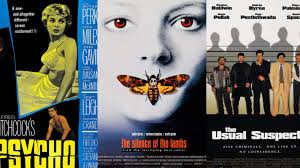Explore the key differences between psychological thrillers in India and Hollywood. Discover how storytelling, themes, and cultural influences shape the mind games in these films.
Psychological thrillers have captivated audiences worldwide with their gripping narratives, mind-bending twists, and deep psychological explorations. While Hollywood has long been a powerhouse in this genre, India has carved its own niche with films that blend psychological intrigue with cultural depth. This article delves into the key differences and similarities between psychological thrillers from India and Hollywood, examining their themes, storytelling techniques, and cinematic styles.
The Evolution of Psychological Thrillers in India and Hollywood
Hollywood’s Approach to Psychological Thrillers
Hollywood has mastered the art of psychological thrillers, producing films that challenge viewers’ perceptions and delve into the complexities of the human mind. Classics like Psycho (1960), Silence of the Lambs (1991), and Se7en (1995) have set benchmarks in the genre. More recent films like Gone Girl (2014) and Joker (2019) continue to push boundaries with intricate narratives and deep character studies.
Key characteristics of Hollywood psychological thrillers:
- Complex, layered protagonists with psychological depth.
- Twists that challenge audience perceptions.
- High production values with a focus on cinematography and sound design.
- Influence of Western psychology and philosophy.
India’s Take on Psychological Thrillers
India’s psychological thrillers are a blend of suspense, drama, and psychological manipulation, often infused with cultural and societal elements. While Bollywood initially focused on crime thrillers, the psychological thriller genre has gained traction with films like Kahaani (2012), Andhadhun (2018), and Tumbbad (2018). South Indian cinema has also contributed significantly, with films like Ratsasan (2018) and Anjaam Pathiraa (2020) pushing the boundaries of storytelling.
Key characteristics of Indian psychological thrillers:
- Strong emotional and moral conflicts.
- Heavy reliance on cultural and social issues.
- Unique blend of psychological suspense with traditional Indian storytelling.
- Increasing use of non-linear narratives.
Storytelling Techniques: Hollywood vs. India
Hollywood: Precision and Psychological Depth
Hollywood thrillers often emphasize meticulous storytelling, where every element contributes to building suspense. Films like Fight Club (1999) and Black Swan (2010) use unreliable narrators to keep audiences engaged. Cinematic techniques such as color psychology, nonlinear storytelling, and atmospheric music enhance the suspense.
India: Emotion-Driven Suspense
Indian thrillers often integrate deep emotional undercurrents. Films like Drishyam (2015) leverage strong familial themes to heighten the psychological tension. Music and cinematography play a significant role, with haunting background scores amplifying the suspense. Additionally, Indian thrillers often have social commentaries woven into their plots.
Themes in Psychological Thrillers
Common Themes in Hollywood Psychological Thrillers
- Identity Crisis: Films like Shutter Island (2010) explore themes of memory, identity, and self-perception.
- Moral Ambiguity: No Country for Old Men (2007) and Gone Girl question morality and justice.
- Paranoia and Fear: The Machinist (2004) and Joker portray the mental deterioration of protagonists.
Common Themes in Indian Psychological Thrillers
- Social Pressures and Guilt: Films like Talvar (2015) and Ugly (2013) explore social norms and psychological torment.
- Supernatural and Psychological Blends: Tumbbad (2018) fuses horror with psychological thriller elements.
- Family and Revenge: Drishyam (2015) is an example where psychological tension arises from familial bonds and revenge.
Cinematic Techniques: Hollywood vs. India
Hollywood’s Techniques
- Use of subtle foreshadowing and misdirection.
- Sound design that manipulates audience perception.
- Tight, fast-paced editing with a focus on realism.
- Method acting to bring depth to characters.
India’s Techniques
- Slow-burn storytelling with emotionally intense moments.
- Integration of music and poetry to enhance psychological tension.
- Vibrant cinematography to contrast dark themes.
- Strong character-driven narratives.
Cultural Influences on Psychological Thrillers
Hollywood thrillers often reflect Western individualism, existentialism, and psychological theories, whereas Indian thrillers frequently incorporate social, familial, and traditional elements. The difference in societal norms and cultural narratives shapes how thrillers are crafted and perceived.
The Future of Psychological Thrillers: Hollywood vs. India
As audiences become more global, Indian thrillers are adopting Hollywood-style realism, while Hollywood films are increasingly exploring deeper emotional narratives akin to Indian storytelling. The future may see collaborations between the two industries, resulting in thrillers that combine the best of both worlds.
Both Hollywood and Indian psychological thrillers offer unique experiences to audiences. While Hollywood relies on precision, psychological depth, and realism, Indian thrillers weave in emotion, cultural narratives, and slow-burn suspense. As the genre evolves, both industries continue to push boundaries, ensuring that audiences remain captivated by the battle of minds on screen.
FAQ
1. What are the key differences between Indian and Hollywood psychological thrillers?
Hollywood thrillers often focus on individual psychological struggles with tight, intricate storytelling, while Indian thrillers blend psychological intrigue with emotional and cultural narratives.
2. Which are some must-watch Hollywood psychological thrillers?
Se7en, Shutter Island, Gone Girl, Black Swan, and Joker are some of the best Hollywood psychological thrillers.
3. Which Indian psychological thrillers are highly recommended?
Andhadhun, Drishyam, Tumbbad, Kahaani, and Ratsasan are excellent Indian psychological thrillers.
4. How do Indian thrillers compare to Hollywood thrillers in terms of cinematography?
Hollywood thrillers tend to focus on minimalism, realism, and psychological tension, whereas Indian thrillers use dramatic cinematography, vibrant colors, and intense musical scores.
5. Is there an increasing demand for psychological thrillers in India?
Yes, Indian audiences are becoming more receptive to psychological thrillers, leading to more innovative storytelling in recent years.
Psychological thrillers, whether from India or Hollywood, continue to push the boundaries of storytelling and audience engagement. As the genre evolves, both industries are set to create even more mind-bending narratives that challenge perceptions and keep viewers on the edge of their seats.
